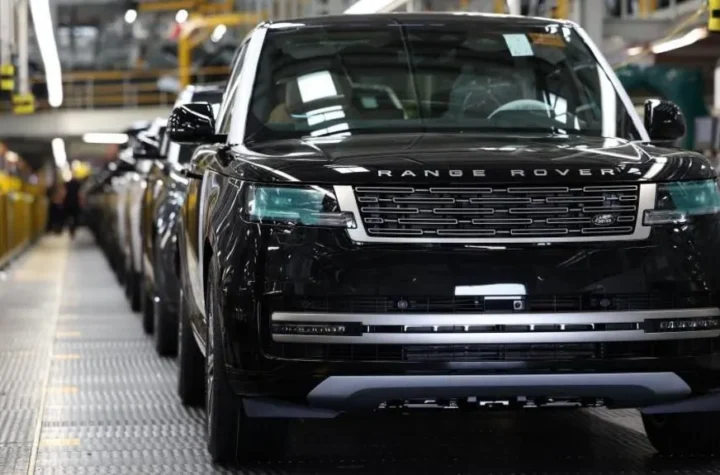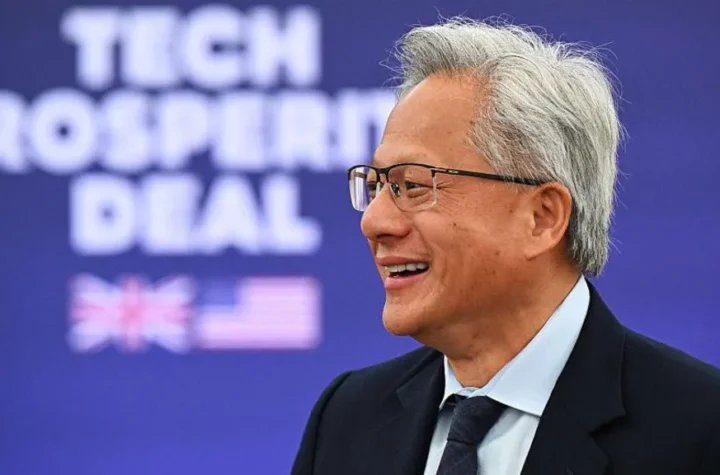The following article is attributed to Sri K Siddhartha, A Polymath, Earth & Space Scientist, Advisor to multiple governments, Author of 50 books & Naleen Chandra has been an Aircraft Maintenance Engineer.
India is negotiating with France to procure 26 Rafale-M fighter jets, a naval variant of the Rafale combat aircraft. This deal is estimated to be worth around $6 billion. The Rafale-M is a twin-engine, carrier-based fighter jet designed for air superiority, ground attack, and reconnaissance missions. It has various sensors and weapons, including the MBDA Meteor air-to-air and Exocet anti-ship missiles.
The Rafale-M is the marine or naval version of the Rafale fighter jet. It is a highly effective 4.5-generation fighter jet.
Two jets were in contention for this contract: the Rafale-M and the F/A-18 Super Hornet. The F/A-18 is a single-engine, carrier-based fighter jet also used by the United States Navy. It is a competent aircraft, but the Indian Navy ultimately decided that the Rafale-M would better suit its needs.
This begs the question. Why did the Indian Navy go for the Rafale-M?
The Indian Navy chose the Rafale-M over the F/A-18 for several reasons. First, the Rafale-M is a more modern aircraft. It was developed in the 2000s, while the F/A-18 entered service in the 1980s. The Rafale-M incorporates several advanced technologies, such as a fly-by-wire flight control system and an active electronically scanned array (AESA) radar.
Second, the Rafale-M is a more versatile aircraft. It can perform a broader range of missions than the F/A-18, including air superiority, ground attack, and reconnaissance. This versatility is essential for the Indian Navy, which needs a fighter jet to meet various operational requirements.
Third, the Rafale-M has a better combat record than the F/A-18. It has been used in Afghanistan, Libya, and Mali combat and has a proven track record of success. The Indian Navy values combat experience, and the Rafale-M’s combat record significantly influenced its decision to purchase the aircraft.
Moreover, the Indian Navy was also looking at the commonality of parts. 36 Rafale fighters are operational with the Indian Air Force, and more are coming from the Air Force.
Thus, maintaining aircraft is cheaper because you have common parts. 80% of the parts on both these versions are the same.
And so, the Indian Navy went for Rafale-M.
The Indian Navy’s decision to purchase the Rafale-M is a significant development. It is a sign that the Indian Navy is modernising its fleet and investing in advanced capabilities. The Rafale-M will give the Indian Navy a considerable boost in its ability to defend its maritime interests.
Why does India need the Rafale-M?
The Indian Navy is a prominent maritime force in the region. It operates two aircraft carriers, INS Vikrant and INS Vikramaditya. The Navy procured 45 MiG-29K fighter jets from Russia to enhance its naval capabilities for $2 billion. These jets were intended to bolster the Navy’s air power and provide a formidable presence on the high seas.
However, the Indian Navy’s experience with the MiG-29K jets has been marred by operational issues, serviceability problems, and suboptimal performance. Five MiG-29K jets have crashed in the past 15 years, raising concerns about their reliability and safety. The Navy’s dissatisfaction with the MiG-29Ks stemmed from these jets being initially designed for something other than carrier-based operations.
Recognising the need for a more suitable and reliable fighter jet for its aircraft carriers, the Indian Navy embarked on a quest to acquire a twin-engine deck-based fighter jet. This quest led to the Defense Research and Development Organization’s (DRDO) conceptual program, the Twin-Engine Deck-Based Fighter (TEDBF). The TEDBF program aimed to develop an indigenous deck-based twin-engine fighter jet that would meet the specific requirements of the Indian Navy.
The TEDBF program was envisioned as a game-changing initiative to enhance the Navy’s operational capabilities and showcase India’s prowess in Indigenous defence production. The program aimed to develop a fighter jet that could seamlessly integrate with the Navy’s aircraft carriers and provide a quantum leap in air combat capabilities.
The TEDBF program is a testament to India’s commitment to self-reliance in defence manufacturing and its aspiration to become a global leader in aerospace technology. The successful development and deployment of an Indigenous twin-engine deck-based fighter jet would not only boost the Indian Navy’s combat effectiveness but also contribute significantly to India’s strategic autonomy and national security.
The TEDBF program, a significant endeavour to bolster India’s naval aviation capabilities, is still facing a timeline challenge. While the project has been in development for some time, it is estimated to be at least a decade from completion.
In the interim, the Indian Navy has chosen the Rafale-M fighter jet to fulfil the role of a carrier-based aircraft. Several factors drove the decision to select the Rafale-M, primarily its compatibility with India’s existing fleet of fighter jets. This compatibility offers substantial cost advantages in maintenance and logistics, as the Rafale-M shares many components and systems with its land-based counterpart.
Initially, the Indian Navy had envisioned a fleet of 57 carrier-based jets. However, in light of the extended timeline for the TEDBF program and the need for a more immediate solution, the number has been reduced to a minimum of 24 Rafale-Ms. This decision reflects a pragmatic approach, balancing operational requirements with budgetary considerations.
The reduction in Rafale-Ms is also influenced by the anticipated development and induction of India’s indigenous TEDBF. The DRDO is spearheading the TEDBF program, aiming to create a state-of-the-art carrier-based fighter jet that meets the unique requirements of the Indian Navy.
While the Rafale-M will serve as a capable interim solution, the TEDBF holds the promise of a game-changing platform for India’s naval aviation. Its Indigenous development represents a significant milestone in India’s quest for self-reliance in defence technologies, and the successful realisation of the TEDBF program will significantly boost India’s maritime prowess.
Deliveries are scheduled to begin within three years after signing all 24 jets are expected to come around 2030
The timeline is crucial for maintaining India’s Naval Air strength until the Indigenous TEDBF becomes operational.
Procuring the Rafale-M is a strategic decision to bolster the Indian Navy’s operational capabilities, ensuring it can effectively utilise the aircraft carriers and maintain air superiority in maritime operations.
This move is a critical interim step as India works towards developing its Indigenous naval aviation capabilities, balancing immediate defence needs with long-term strategic needs.
Why Rafale-M?
The Rafale-M is a multi-role, carrier-based fighter jet designed for operations from aircraft carriers. It is equipped with advanced avionics, sensors, and weapons systems, making it well-suited for various naval missions such as air defence, strike operations, and surveillance.
Acquiring these jets is crucial for the Indian Navy, which aims to bolster its air power and enhance its capabilities to project force from the sea. The Rafale-M will operate from India’s indigenous aircraft carriers, INS Vikrant and INS Vikramaditya.
Just like in France, where the Navy and the Air Force operate the Rafale fighters, India will also do so since the IAF already has 36. Two squadrons are stationed and ready for war whenever China or Pakistan upsets the ante.
In France, maintenance and storage for the Rafale are standard, as are common simulators.
The overall contract cost can decrease if India has standard maintenance and stores. The overall cost of the contract involves significant maintenance and infrastructure building contracts.
Joint acquisition by the IAF and the Navy would have reduced the cost, and India would have another fighter aircraft manufacturing line besides the Tejas fighter. This is because Dassault would have had the numbers to set up a production line in India.
Deal Significance
The potential deal with France for the Rafale-M jets is significant for several reasons:
Strategic Partnership: The strategic partnership between India and France in the defence sector is crucial, reinforcing India’s regional position and enhancing its military capabilities. The previous procurement of 36 Rafale fighter jets for the Indian Air Force marked a significant milestone in this partnership.
- Technological Advancements: France is renowned for its technological prowess, particularly in defence. The Rafale fighter jets embody this technological advancement, featuring state-of-the-art capabilities that position India as a formidable military force.
- Mutual Economic Interests: France’s interest in India’s UPI (Unified Payments Interface) and the evolving trend towards de-dollarization creates the potential for mutually beneficial economic arrangements. It is intriguing to consider whether the payment for these fighter jets would be made in a mutually agreed-upon currency, signifying a departure from the traditional reliance on the US dollar.
- Geopolitical Implications: This deal’s geopolitical implications are worth examining. It would be intriguing to observe France’s response if countries like Pakistan or China expressed interest in purchasing the same fleet of Rafale fighter jets by paying a similar amount. Such a scenario could significantly affect the regional balance of power and geopolitical dynamics.
- Delivery Timeline: France has three years to deliver the fighter jets to India, representing a time-bound commitment. The timely delivery of these aircraft is essential for India to enhance its defence preparedness and maintain a strategic advantage. The progress of the delivery process and any potential delays or challenges will be closely monitored.
The Rafale-M, a versatile and advanced naval fighter aircraft, promises to significantly enhance the Indian Navy’s capabilities and safeguard maritime interests in the Indian Ocean Region (IOR).
- Potent Naval Aviation:
- The Rafale-M’s integration into the Indian Navy will provide a leap in naval aviation capabilities.
- It features advanced avionics, radar, and electronic warfare systems, enhancing the Navy’s ability to conduct long-range maritime surveillance and engage multiple targets simultaneously.
- The aircraft’s potent air-to-air and air-to-ground capabilities, including using precision-guided munitions, will bolster the Navy’s offensive and defensive prowess.
- Maritime Interest Protection:
- The Rafale-M’s deployment will allow the Indian Navy to effectively guard maritime interests in the IOR, a strategically vital region.
- With its extended range and endurance, the aircraft can operate from aircraft carriers or shore-based facilities, enabling rapid response to evolving maritime situations.
- The Rafale-M will enhance the Navy’s ability to protect against potential threats, secure sea lines of communication, and support humanitarian assistance and disaster relief operations.
- Enhanced Air Superiority:
- The Rafale-M’s superior manoeuvrability and advanced combat systems will give the Indian Navy a formidable edge in air superiority.
- Pilots will have access to real-time situational awareness, enabling them to engage in air combat effectively and neutralise enemy aircraft.
- The integration of the Rafale-M will contribute to the Navy’s ability to establish and maintain control of the airspace, safeguarding maritime assets and strategic installations.
- Multi-Role Flexibility:
- The Rafale-M’s multi-role capabilities make it a versatile asset for the Indian Navy.
- It can seamlessly transition from air-to-air combat to ground attack missions, providing flexibility in responding to diverse maritime scenarios.
- The aircraft’s ability to carry various weapons and sensors enables it to engage in multiple mission profiles, including anti-ship warfare, maritime strike, and reconnaissance.
- Interoperability and Integration:
- The Rafale-M’s compatibility with other naval platforms and systems will facilitate interoperability and enhance overall maritime operations.
- Its integration into the Indian Navy will allow seamless communication and data sharing, ensuring coordinated and effective responses to maritime threats.
- The aircraft’s advanced mission systems will contribute to the Navy’s network-centric warfare capabilities, enabling real-time information sharing and decision-making.
- Technology Transfer and Self-Reliance:
- The acquisition of the Rafale-M also presents an opportunity for technology transfer and self-reliance.
- Collaborations with French manufacturers and technology partners can contribute to developing indigenous capabilities in aerospace, avionics, and naval systems.
- This could strengthen the Indian defence industry and reduce dependence on imports in the long term.
Make in India: The deal is expected to include provisions for technology transfer and potential co-production opportunities, aligning with India’s ‘Make in India’ initiative.
The Indian government insists that some parts be made in India under the Atmnirbhar scheme.
Even if it’s 5 or 10%, at least India will start producing and manufacturing certain aircraft parts. It can now create an ecosystem after 36 Rafales for the Air Force and 26 Rafale-M for the Navy.
The famous Apache helicopter gunships, made by Boeing and arguably the most potent and finest heavy gunships in the world, have their fuselages made in India.
India is familiar with fighter aircraft and indigenisation in the context of defence purchases. In 2007, India and Russia agreed to a deal for another 40 Su-30MKIs to be produced in India under license for US$1.6 billion.
India’s journey towards indigenisation of fighter aircraft dates back several years. In 2007, India and Russia signed a significant agreement for the licensed production of 40 Su-30MKIs in India for US$1.6 billion. This deal marked a pivotal moment in India’s efforts to establish a robust domestic defence manufacturing ecosystem. The Su-30MKI, a multi-role fighter aircraft, was chosen for this collaboration due to its advanced capabilities and suitability for India’s defence needs.
Before the Su-30MKI deal, India had undertaken various indigenisation initiatives in the defence sector. However, the production of a complex platform like a fighter aircraft required extensive technology transfer and collaboration with a foreign partner. The Su-30MKI project allowed India to absorb advanced manufacturing techniques and technologies while meeting its immediate requirements for fighter aircraft.
The licensed production of the Su-30MKI in India involved establishing production lines, training personnel, and setting up supporting infrastructure. The project aimed to fulfil India’s defence needs and create a sustainable foundation for future Indigenous aircraft development programs. The experience gained through this collaboration played a crucial role in India’s subsequent efforts to develop indigenous fighter aircraft like the Tejas.
The Su-30MKI indigenisation project strengthened India’s defence capabilities and laid the groundwork for a more self-reliant and technologically advanced defence industry. It marked a significant milestone in India’s journey towards achieving strategic autonomy and reducing its dependence on foreign suppliers for critical defence equipment.
Negotiation Process
The negotiations between India and France will involve discussions on various aspects, including the final cost, delivery timelines, offsets, and potential co-production arrangements.
As the negotiations progress, more details regarding the deal’s specifics are expected to emerge. The successful acquisition of the Rafale-M jets will undoubtedly enhance the Indian Navy’s operational readiness and maritime security capabilities.
India’s military prowess has been steadily growing in recent years, making it a force to be reckoned with on the global stage. This growth is mainly due to India’s indigenisation efforts, which have allowed the country to develop and produce its military equipment.
Several factors have contributed to India’s military growth. One is the country’s large population, which provides a vast pool of potential recruits. Another is India’s strong economy, which has allowed the government to invest heavily in defence spending. Finally, India has a long history of military tradition, which has helped to create a deep sense of patriotism and a commitment to national security.
India’s indigenisation efforts have been awe-inspiring. The country has developed several world-class military technologies, including the BrahMos supersonic cruise missile, the Tejas light combat aircraft, and the Arihant nuclear submarine. These technologies have helped make India a more self-reliant military power and given it greater strategic autonomy.
Missile Exchange
The joint trials of the Astra missile on Rafale fighters, beginning with captive tests, mark a significant milestone in the Indo-French defence cooperation. The agreement between India’s Bharat Dynamics Limited (BDL) and France’s Dassault Aviation in 2022 further solidifies the partnership.
The Astra missiles, currently deployed on Su-30MKI and LCA Tejas Mk1A, are Beyond Visual Range Air-to-Air Missiles (BVRAAMs) with advanced capabilities. Their integration into Rafale jets will enhance the aircraft’s combat effectiveness. Additionally, the Smart Anti-Airfield Weapon (SAAW) developed by DRDO can be integrated into Rafale, providing precision strike capabilities against ground targets.
These developments not only strengthen the Indian Air Force’s arsenal but also have strategic implications. Such provisions enable India and France to negotiate defence deals more professionally. France’s willingness to integrate Indian missiles into Rafale jets acknowledges the supremacy of Indian missile technology. This recognition gives India leverage to make favourable terms in future defence procurements.
Moreover, France exports Rafale jets to other countries. When equipped with Indian missiles, these further enhance India’s position as a leading manufacturer of advanced defence systems. This showcases India’s growing capabilities in the global defence market and establishes its credibility as a reliable partner for military cooperation.
The joint missile trials and integration efforts between India and France are not merely transactional but also exemplify the deepening strategic ties between the two nations. They strengthen regional security, foster mutual trust, and promote closer collaboration in defence and technology.
The missile exchange between India and France represents a convergence of advanced technologies, strategic partnerships, and geopolitical considerations, solidifying the shared commitment to mutual security and regional stability.
India’s growing military might and indigenisation drives have had several positive implications for the country. For one, they have helped to deter potential adversaries and to ensure India’s territorial integrity. They have also given India an excellent voice in international affairs and helped promote regional stability.
However, some potential challenges are associated with India’s military growth. One is the risk of a regional arms race. Another is the potential for India to become a more assertive military power, which could lead to tensions with its neighbours.
It remains to be seen how India will use its newfound military power, but it is clear that the country is now a force to be reckoned with.











More Stories
Whistleblowers Accuse Meta of Covering Up Child Safety Risks in VR Products
Revolutionising Defence Manufacturing: India’s Leap Toward Precision and Performance
Empowering Entrepreneurs: The Visionary Leadership of Payal Agarwal Jain